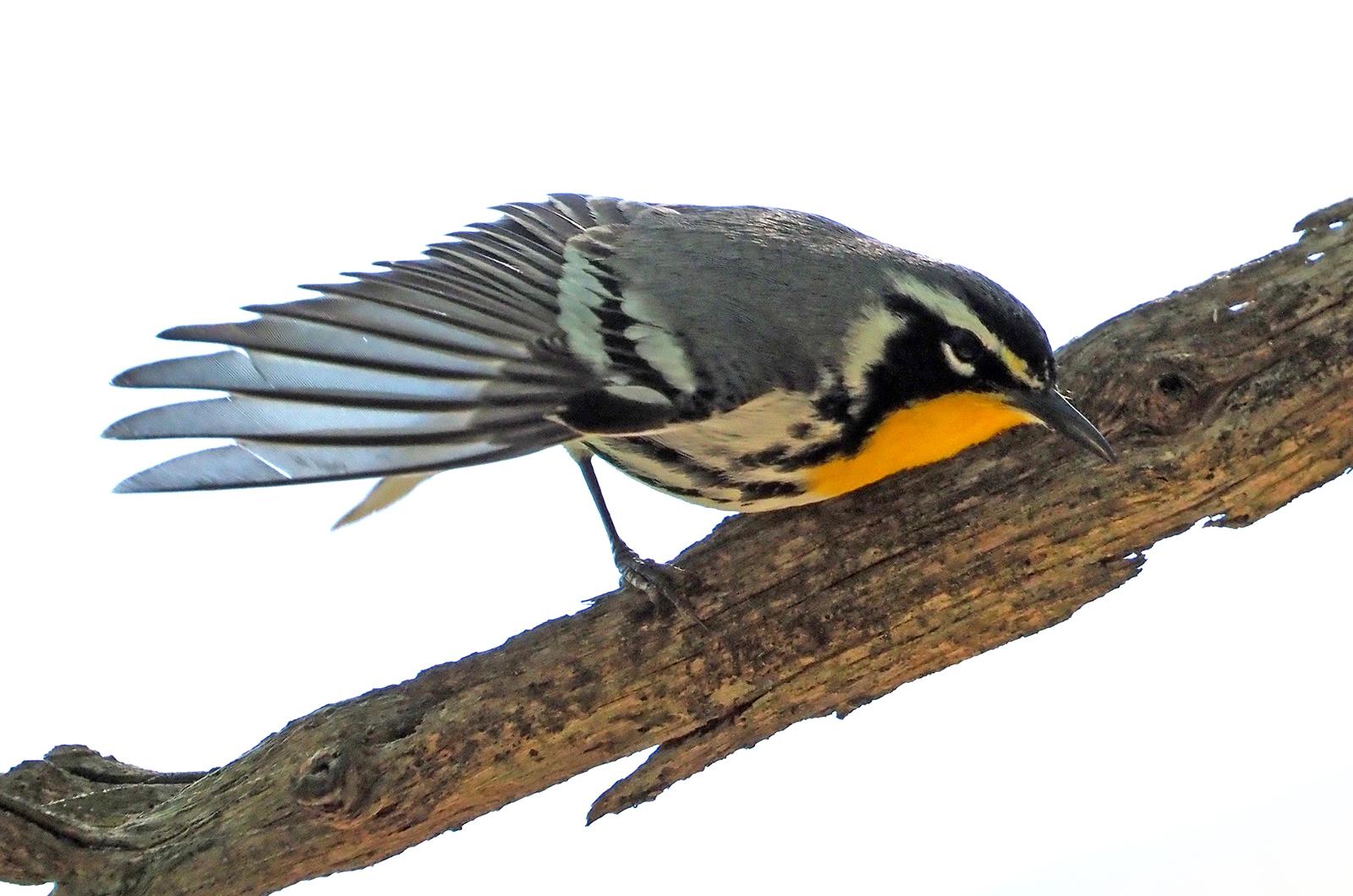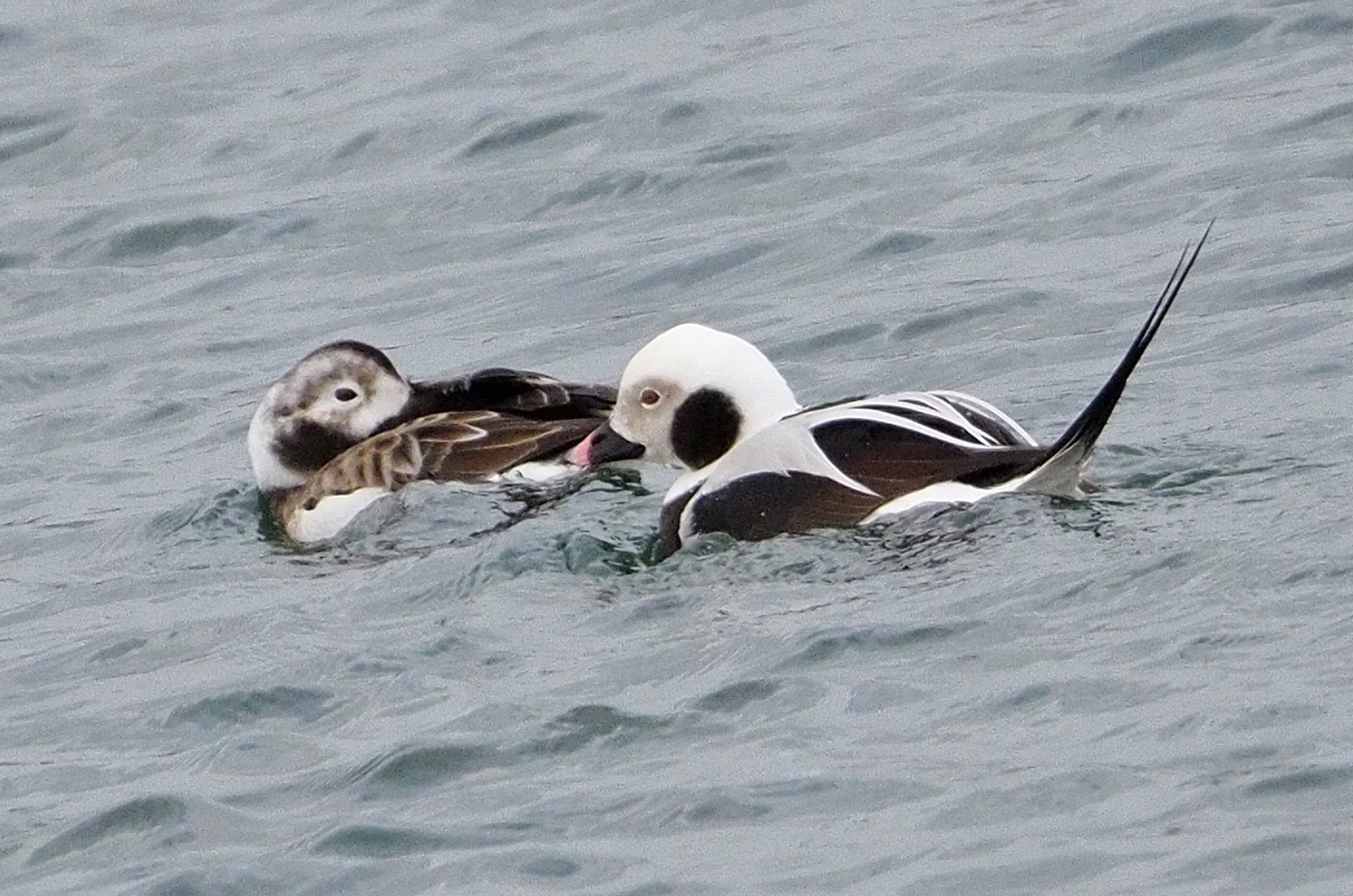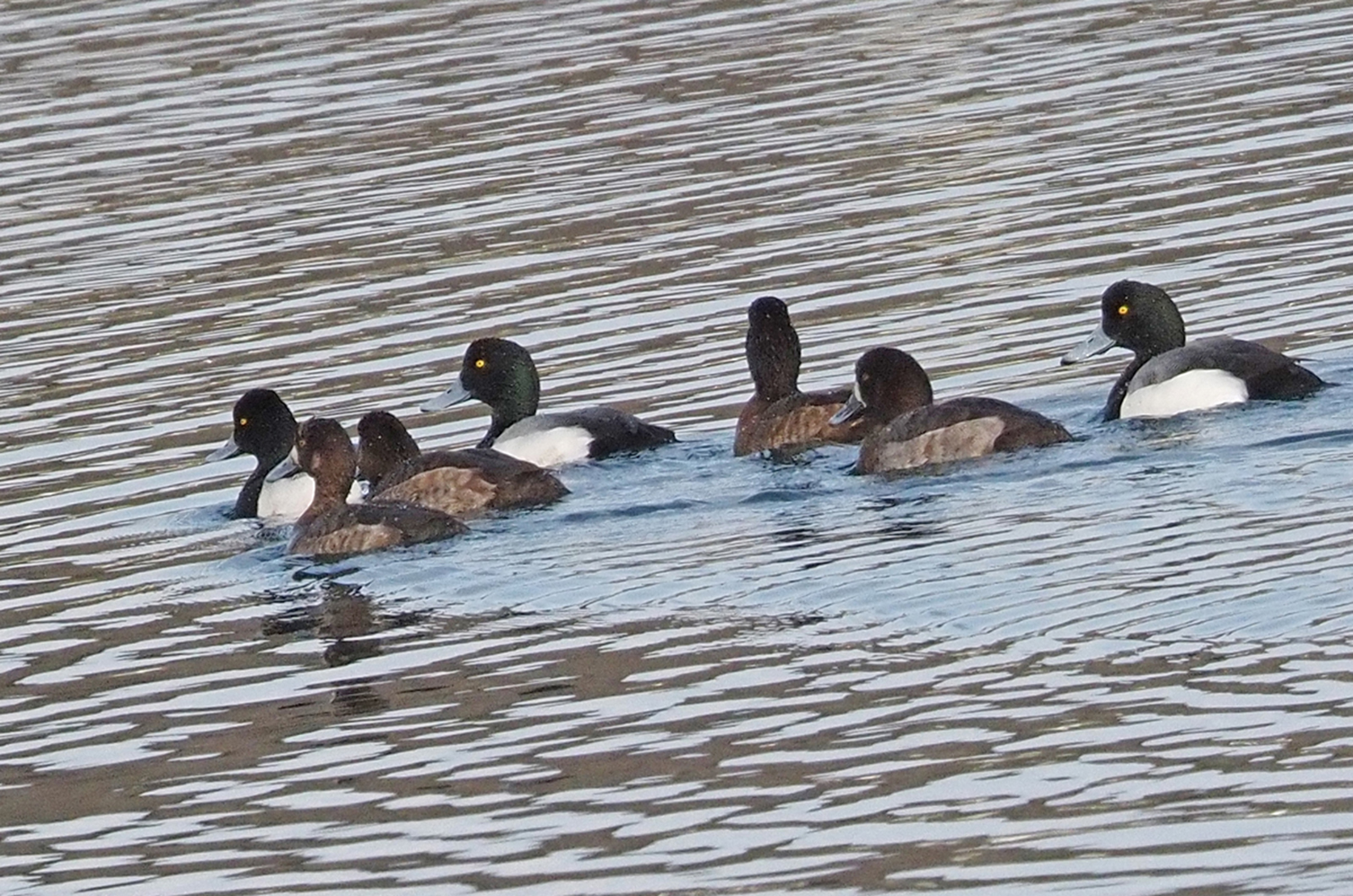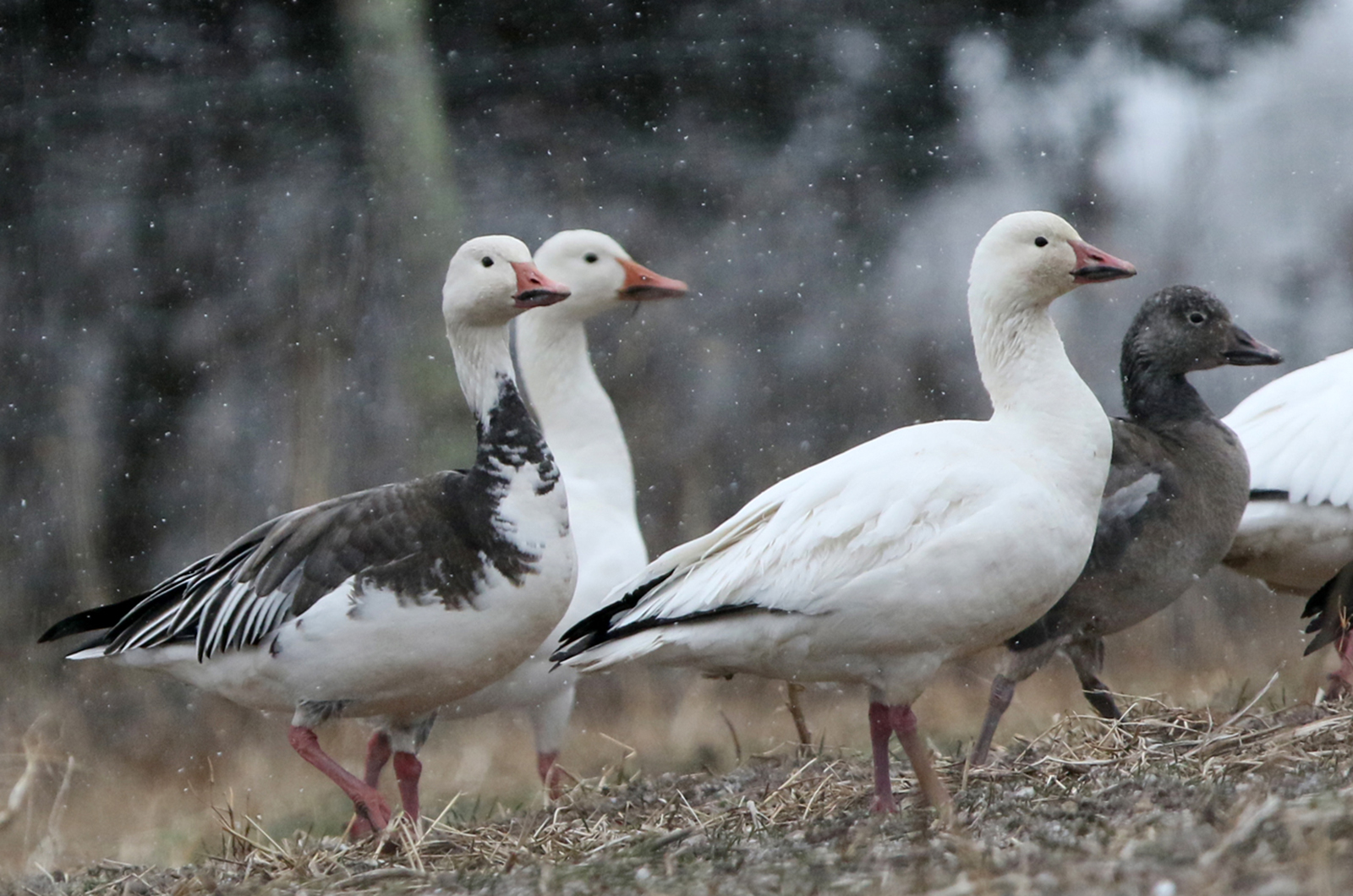It is that time of the year: Thanksgiving. Do not forget to remember everything you are thankful for.
Since it is Thanksgiving time, you might think this column would talk about turkeys. Nope. It is also the time of the year when many of our winter resident waterfowl start to arrive. They will continue to move in as cold temperatures and ice forces them out of their more northern waters. Their numbers will increase as December progresses.
Long-tailed ducks dwell on the ocean and are famous in birding circles for their massive flights near the western end of Nantucket, where tens of thousands would commute from the ocean to their nocturnal roosts in Nantucket Sound. They are starting to drop in now. Luanne Johnson spotted the first of the season from the West Chop flagpole on Nov. 13. The next day Matt Born spotted two long-tails at Squibnocket, along with 15 harlequin ducks and 10 ruddy ducks. On Nov. 15 Bob Shriber and Susan Whiting spotted five at Squibnocket, along with 13 harlequin and 11 ruddy ducks, and two first-of-season horned grebes. This species — not a duck — was also spotted by Charles Morano on Nov. 15 at Squibnocket Beach.
Also on Nov. 15, Bob Shriber spotted three snow geese — a first for the season — in Aquinnah. That day Nancy Nordin observed a full breeding plumage common eider in the Menemsha Basin. The eiders I have seen so far this fall have all been females or immature males.
Common goldeneyes frequent our coastal ponds in the winter. Jeff Bernier has the first report of them: he spotted one at Little Beach on Nov. 16. The Martha’s Vineyard Bird Club visited Long Point on Nov. 19 and found quite a few ducks: eight common goldeneye, seven greater scaup (a first for the season), one long-tailed duck, as well as eight ruddy ducks, 30 black ducks, scoters (two surf, 200 white-winged, four black), two common eiders, 140 bufflehead, 18 hooded mergansers and six red-breasted mergansers. Matt Pelikan also found a greater scaup somewhere in Oak Bluffs or Edgartown on Nov. 19.
Birding both Edgartown and Oak Bluffs on Nov. 19, Matt Pelikan found one gadwall, one greater scaup, nine American wigeon, 79 mallard, 31 black duck, two green-winged teal and 188 bufflehead,
Tisbury Great Pond is open to the ocean now so it is about five feet more shallow, which seems to attract waterfowl to Town Cove. Charles Morano visited there Nov. 19 and found a flock of 53 green-winged teal.
Shorebirds are also on the move. The first purple sandpipers of the season were found by Bob Shriber on Nov. 20; there were four near the Squibnocket parking lot. On Nov. 15 he also found a Wilson’s snipe along with seven killdeer at Town Cove. Two days later David Padulo observed two Wilson’s snipes at Sheriff’s Meadow Pond. I find it somewhat remarkable that we have two reports of these secretive and hard to find snipes.
Greater yellowlegs are easier to find; nobody would call them secretive. On Nov. 17 Bob Shriber found a flock of 22 at Town Cove. Smaller numbers have also been reported. On Nov. 17, Susan Whiting spotted a greater yellowlegs at Old Fields Path. Nov. 19 was a busy day; Susan Whiting found one on Tisbury Great Pond beach, Matt Pelikan saw five at Little Beach, Charles Morano observed nine at Town Cove and the MV Bird Club discovered four at Long Point. I watched two at the Ocean Heights boat launch, their bright yellow legs glowing in the midday sun.
A few American oystercatchers are still lingering here. Jeff Bernier spotted one American oystercatcher on Nov. 18 at Little Beach. The next day Matt Pelikan saw one at the same place. I saw one at Sarson’s Island on Nov. 19.
We cannot go a whole week without mentioning songbirds. Susan Whiting and Bob Shriber found the first of the season fox sparrow at Squibnocket on Nov. 14, along with an orange-crowned warbler. Matt Born also found an orange-crowned warbler at Squibnocket on the same day. Purple finches were also spotted, Nancy Nordin saw one on Nov. 14 at the Gay Head Cliffs and Susan Whiting had a male and a female visiting her Quansoo feeder on Nov. 19.
Pine siskins are predicted to erupt southward from their very northern breeding grounds because there is not much of their food way up there. Evidence of this comes from Liam Waters’s Oct. 15 sighting of two at the Gay Head Cliffs and, more recently, Gus Ben David spotted one visiting his feeders on Nov. 18.
On Nov. 18 Lanny McDowell flushed an immature female Baltimore oriole out of a four-foot high, dense boxwood hedge late in the afternoon and she hung around the feeder for a while.
A late yellow-throated warbler was spotted by Georgie White at her home on Skiff avenue in West Tisbury on Nov. 17. The bird then moved 200 feet to feeders at the home of neighbors Cynthia Bloomquist and Thaw Malin, where it has been seen on Nov. 18 through 20. We had individuals of this species through the summer in the John Hoft Road area, not very far from this location; could it be one of those birds?
Here are more sightings to close the column. There are only two reports of eastern phoebes in November this year. Matt Pelikan saw one at Long Point on Nov. 5 and Charles Morano spotted another at Squibnocket Beach on Nov. 15. Nancy Nordin watched a flock of about 160 grackles on Nov. 14 at the Gay Head Cliffs.
Red-winged blackbirds made an appearance at Felix Neck on Nov. 17: eight were spotted by Silas Beers and four were seen by Richard Price.
Please email your sightings to birds@mvgazette.com.
Robert Culbert is an ecological consultant with Nature Watch LLC living in Vineyard Haven.












Comments
Comment policy »